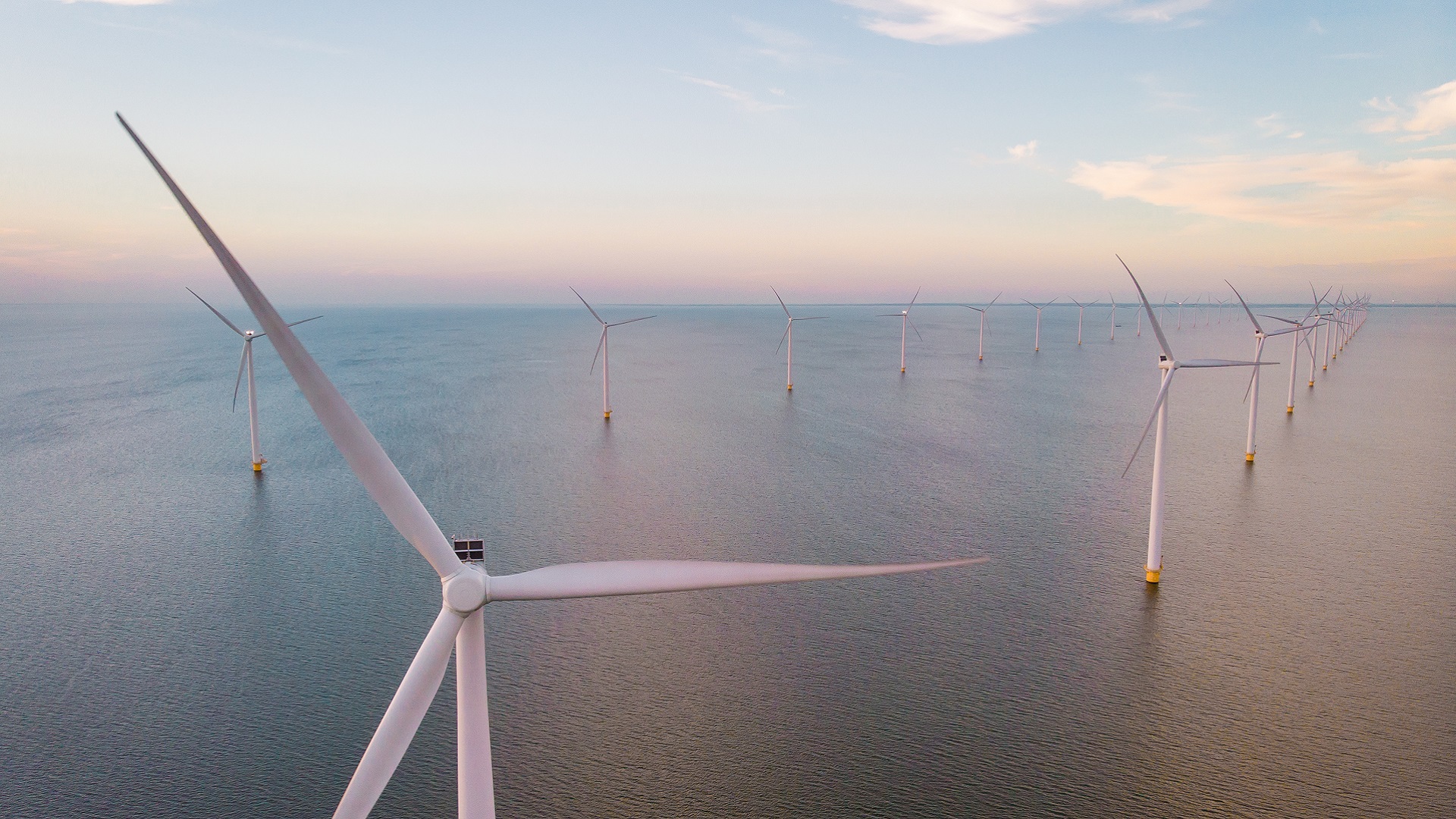This article was co-authored by Jack Brown and Justin Lucas.
Since the commencement of the Offshore Electricity Infrastructure Act 2021 (Cth) (‘OEI Act’) in June 2022, there has been a flurry of activity in the domestic offshore wind space.
This article seeks to highlight some of the key legal interfaces that Commonwealth and State governments, and prospective developers will need to consider in navigating these early stages of offshore wind development in Australia.
Paying close attention to the emerging regulatory landscape as these interfaces evolve and develop will help avoid inadvertent non-compliances. For proponents, early time and cost investment in securing the applicable approvals and active engagement with regulators will help reduce compliance burdens. For Governments, recognising these interfaces and their resulting complexity and seeking to proactively streamline and guide proponents will facilitate offshore wind development and further support investment in the industry.
Application of Commonwealth vs State laws
The OEI Act applies to offshore wind activities in the ‘Commonwealth offshore area’. Relevantly, the Commonwealth offshore area is defined as the waters, seabed and subsoil in Australia’s territorial sea and exclusive economic zone, excluding the coastal waters of a State or the Northern Territory.1 This area of coverage is consistent with Australia’s Offshore Constitutional Settlement arrangements, which deal with Commonwealth and State jurisdiction over waters to the edge of the 12 nautical mile territorial sea. The settlement establishes that States and Territories have legislative power over areas up to three nautical miles from the territorial sea baseline, termed ‘coastal waters’, whilst the Commonwealth has legislative power over the remaining areas of the territorial sea.
The effect of this distinction is that any offshore wind activities carried out within coastal waters, at least in part, fall within the regulatory remit of the States or Territories (collectively the ‘States’). For instance, the Gippsland zone is to be located 10km (approximately 6 nautical miles) offshore so that the turbines will be located in Commonwealth waters but the connections must traverse Victorian waters.
This raises important questions around the application of differing Commonwealth and State regulatory schemes and the extent to which complexities and inconsistencies may arise.
State laws will apply to activities occurring within coastal waters, including activities that may also fall within the ambit of the Commonwealth framework, unless they defer to the Commonwealth rules (as has occurred in the offshore petroleum sector).
Section 183 of the OEI Act, a provision adapted from Australia’s offshore petroleum law, allows the statutory regulator, the National Offshore Petroleum Safety and Environmental Management Authority (‘NOPSEMA’) to enter into contracts with the States to provide regulatory services on their behalf, thereby allowing NOPSEMA to regulate those types of matters arising from offshore electricity infrastructure activities in coastal waters. Section 183 allows States to contract with NOPSEMA with respect to specific offshore wind projects, which may be more palatable for States, depending on the size and scope of the project, rather than a blanket transfer of regulatory powers in relation to all offshore wind activities.
The Northern Territory Government expressed initial support for this approach.2 Whether the other States would be willing to transfer regulatory powers to NOPSEMA remains unclear, although Victoria has indicated a broader intention to streamline its regulatory and approvals processes with the Commonwealth framework.3
Whilst this landscape remains to be developed, stakeholders should ensure they are staying across all State regulatory and legislative updates as more offshore wind zones are declared by the Commonwealth.
Environmental approvals
Concurrent with the licensing regime in the OEI Act and Offshore Electricity Infrastructure Regulations 2022 (Cth) (OEI Regulations) are the environmental approvals required under the Environment Protection and Biodiversity Conservation Act 1999 (Cth) (‘EPBC Act’), administered by the Department of Climate Change, Energy the Environment and Water (‘DCCEEW’).
The federal government has provided some guidance to clarify the requirements and interactions between the OEI Act and the EPBC Act.4 Importantly, it is stated that offshore infrastructure activities (as defined under the OEI Act) are subject to the environmental approval requirements under environmental legislation.
Approvals under the EPBC Act are required if the activity (or the ‘action’) is expected to have a significant impact on matters protected under Part 3 of the EPBC Act, including the Commonwealth marine area. Additionally, activities occurring within, or that could impact upon Australian Marine Parks (which account for 45% of Commonwealth waters) require authorisation by the Director of National Parks (‘DNP’) under the EPBC Act.
To date, prospective proponents have adopted differing approaches. Some proponents are yet to refer any proposed activities to DCCEWW, some have only sought approval for feasibility activities, and others have sought approval for commercial activities beyond the feasibility licence.
The critical point, however, is that obtaining an EPBC Act approval does not guarantee the grant of a relevant licence under the OEI Act, and vice versa. Each application will be assessed on its merits.
Other Commonwealth environmental approvals may also be required depending on the location and nature of activities, including under the Environmental Protection (Sea Dumping) Act 1981 (Cth) and the Underwater Cultural Heritage Act 2018 (Cth), also administered by DCCEEW.
Additionally, environmental approvals under relevant State and Territory planning laws will be required in relation to any activities planned to take place in State and Territory designated areas e.g. transmission and connection to the onshore grid. It is at present unclear whether states will attempt to streamline the approvals processes, although Victoria has indicated its intention to reform its regulatory framework to be ‘complementary to existing Commonwealth regulatory frameworks’.5
Proponents are encouraged to actively engage with NOPSEMA, DCCEEW and any other environmental regulators relevant to the project in the early planning stages.
Competition law issues in relation to overlapping applications
Stakeholders must also be cognisant of relevant competition laws applicable to the OEI framework. Under the OEI Regulations, the maximum area for a feasibility or commercial licence is 700km2.6 As the licence areas cannot overlap, the granting of feasibility licences is competitive.
As with any competitive process, any form of bid rigging or territory allocation is prohibited under cartel laws.
The risk of this type of conduct occurring, in contravention of the Competition and Consumer Act 2010 (Cth) is made potentially more acute by virtue of the licence assessment process.
Under the OEI Regulations, where two or more feasibility licence applications of equal merit are made for an overlapping area, affected applications will be given an opportunity to revise and resubmit their applications to remove the overlaps.7 Any applicants who are still overlapping after resubmission may be asked to revise their applications again or required to make a competitive financial offer to secure the licence.8
If an applicant is asked to revise, it must be very cautious not to collude with other applicants about how overlaps might be resolved.
Communications signalling intentions for the re-submitted application should not occur. In particular, applicants should not discuss the sharing or withdrawal of an application in relation to an overlapping area, without a competition law compliant structure first being in place, if at all.
Conclusion
Effective management of these interfaces is one piece of the puzzle as the offshore wind sector continues to develop in Australia. By better understanding the complexities that arise, staying up to date with regulatory and industry developments and proactively managing and responding to these issues, Governments and stakeholders will be better placed to achieve Australia’s offshore wind potential.
For more information or if you have any questions, please reach out to our team.



